erhitzt geschüttelt gelöst - heated shaken dissolved
erhitzt geschüttelt gelöst – heated shaken dissolved
Intro: interview with Susanne Witzgall
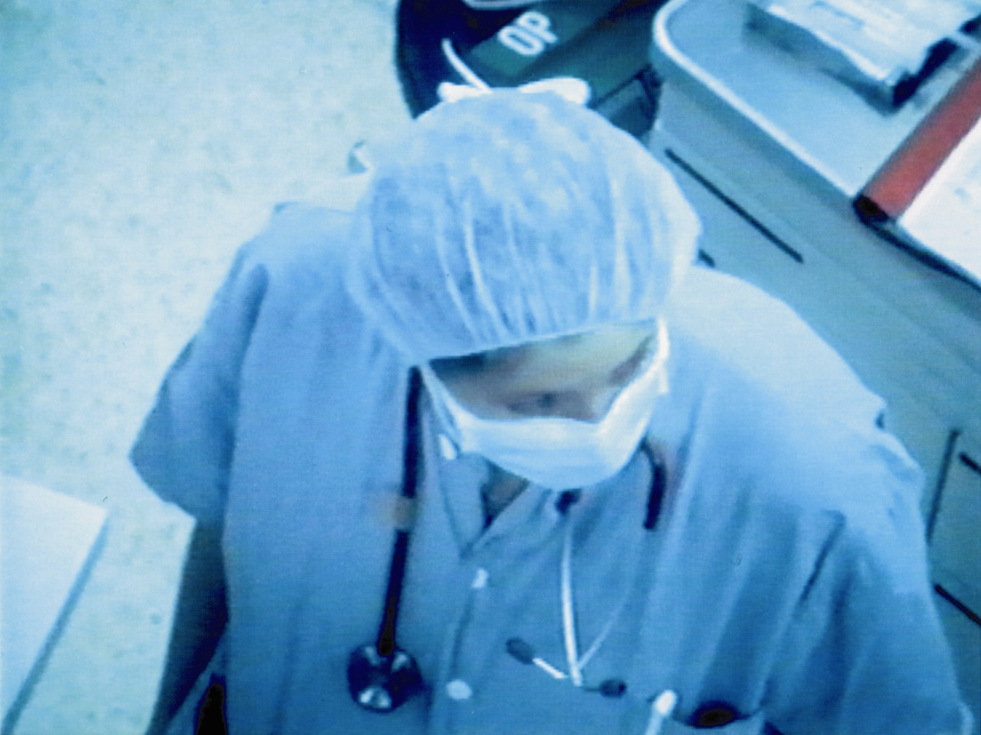
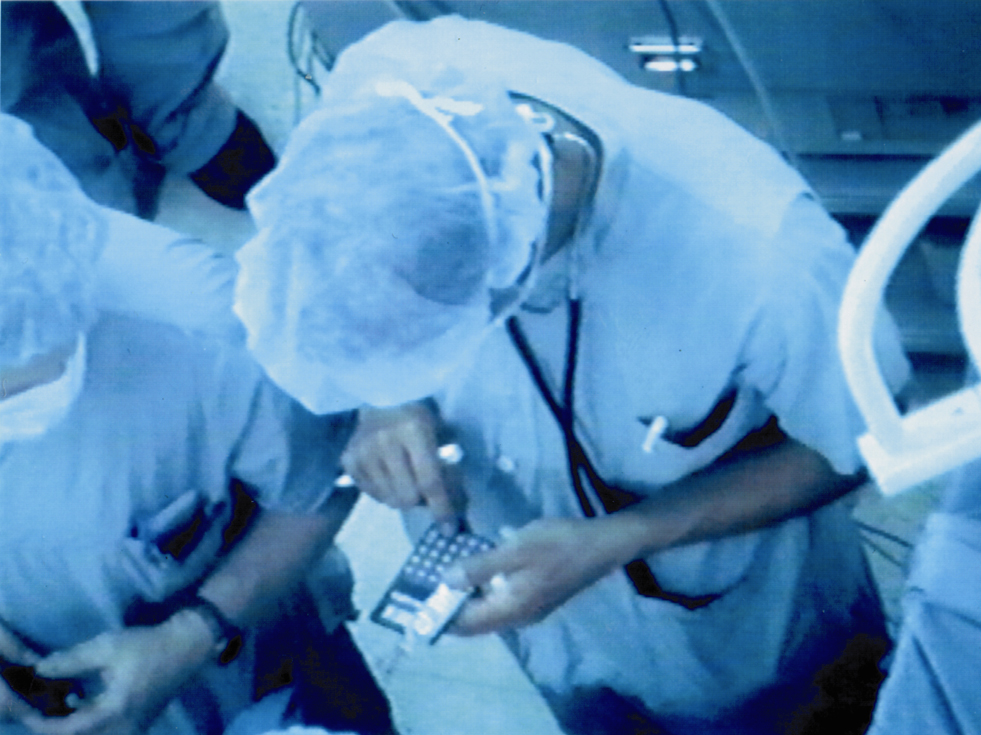
mind stick 4.0 : cibachrome on transpartent plexiglass, 1 x 2 m, 2013, detail 1
Intro
Excerpt from interview with Susanne Witzgall
W: Another topic that fascinates you is immunology. You made models of some bacteria and viruses for the exhibition “heated, shaken, dissolved” at Künstlerhaus Bethanien and exhibited them. Do these models meet scientific standards? P: The models were created according to scientific criteria. They are based on how bacteria are described and seen. Scientists often borrow from other areas; for example, the descriptions are iron-shaped, cigar-shaped, bun-like or coffee bean-like. They take something from everyday life to use to describe the shape of a bacterium.
W: Did you then start more from the description in the design or from the actual morphology?
P: That’s connected. Especially in pathology, the relationship between what is described and what is seen is very close. There is also a special terminology. One has to say that in a heart attack the affected muscle area is “clay yellow”. You can’t call it any other shade of yellow, otherwise it doesn’t fit into the category. Clay yellow stands for infarction. For example, a Neisseria is coffee bean shaped. The scientific term is diplococci, but coffee bean-like is the description. I thought it was funny that through the descriptions, the bacterium gets connected to whole new areas of everyday life. This gave me the idea of modeling bacteria as if they were things.
In addition, I was constantly dealing with microorganisms in microbiology. I bred them and then destroyed them again. To detect them, I heated them or burned them up. That’s pretty brutal. I mean, they’re just bacteria on some Petri dish, but the interventions are radical and I had the desire to set a monument to them one day or to make a portrait of them. After all, they live with and among us all the time, no matter how toxic or dangerous they are, or considered to be. In the field of immunology, a lot is happening at the moment in terms of models of thought. Attempts are being made to think differently about the phenomenon of infection. In addition, the “perpetrator-victim model” is being discussed; how one can be a perpetrator and a victim at the same time. You breed bacteria to learn how to destroy them. But you can get infected and suddenly you are the victim and they are the perpetrators.
W: You exhibited the models in connection with other work because of that.
P: I made videos of the workplaces in the clinics and scientific laboratories. Interestingly, they are often quite messy and don’t correspond to the cliché that everything in science is accurate and rectangular. Incidentally, I realized that it’s not: the artists are the messy ones and the scientists are the organized ones. I also don’t think the way of working is that different. To find out something in medicine, you need to think not only logically, but you also should see and allow contradictory or absurd thoughts. As a doctor, you also need to follow your intuition. Good diagnoses are not just made coldly. Many parameters come together; you cannot rely on normative yardsticks. Apart from that, there are no unambiguous yardsticks, you work with limit values, approximations and derivations, which are constantly revised and shifting. In medicine, a result is never unambiguous because you are dealing with living beings.
W: To come back to the perpetrator-victim principle. You photographed the workplaces, or rather you photographed hands.
P: Yes, the workplaces and how work is done at them. It all came down to a fairly plain level when I realized that the most important thing is dealing with life. I took stills from the videos. There were also two large scanachromes, portraits of operators, the other “perpetrators.”
W: And you then exhibited these works together with the bacteria and virus models?
P: Exactly.
W: In a way, you’re relating processes in microbiology to general human action here.
P: That is, after all, human action.
W: So, you’re not concerned with comparing social societal processes with what happens in the human body or how the scientists act in the field of microbiology?
P: I think that this cannot be separated and is also related to the time in which one lives. How a bacterium is dealt with, what it is regarded as, how it is described and treated, also has to do with the societal situation. I’m interested in discovering or drawing such entanglements.
W: And what concrete entanglements do you see in today’s world?
P: It is striking that in the field of taxonomy, a division into empires is being abandoned more and more. I find the question of definition very interesting. In former times one had the animal realm and the plant realm. There again there were subdivision, similar to the subdivision into nations. This model is outdated. Politically, people don’t think that way anymore either, hopefully, at least by a large part of the people who deal with it. I think that’s where developments are analogous. But I don’t want to provide an illustration via the detour of medicine. In working with the experience of the scientific field or medicine, issues can be touched. I think it’s important to create awareness of what’s happening, or to raise awareness of where we are scientifically as well as socially.
W: You take a phenomenon from today and present it value-free, and what associations come is primarily up to the viewer.
P: What does value-free mean? I am, of course, a child of my time and of the current discourse. I work in those places where things become brittle or ramshackle, where something doesn’t work, where a definition no longer applies or where you can no longer think the way you used to. I’m interested in depicting these border areas, but not in proving them unambiguously or morally.
W: Are the interfaces between scientific fields blurring today? Are the areas no longer as clearly defined as perhaps they were at the beginning of this century?
P: I don’t know if these boundaries are blurring. On the contrary, they are possibly becoming more and more precise, and this makes it obvious that they overlap. It is no longer clear, for example, whether this is now a pharmacological problem or a neurological problem or a problem of mindset at all. This is due to the attempt to classify problems into domains – the problems, of course, do not care about their classification. You don’t get very far with a rigid insistence on the boundaries of the divisions anymore. It is not for nothing that there are now scientific fields such as psycho-neuro-immunology. By communicating knowledge from different perspectives, new connections are detected and new models are developed. It is also becoming increasingly clear that the constructs you set up will be recovered. This is not just an epistemological platitude; it has implications all the way into action, into dealing with life. It is about which models of thinking you operate with. The awareness of the relativity of facts is also of great relevance. In this way, areas become interconnected and more permeable. We once talked about the fact that scientists from different fields are now no longer able to talk to each other. On another level, this is possible again; if you think about how to produce a statement at all.
excerpt from an interview with Susanne Witzgall in DANNDONE, 1999
Images
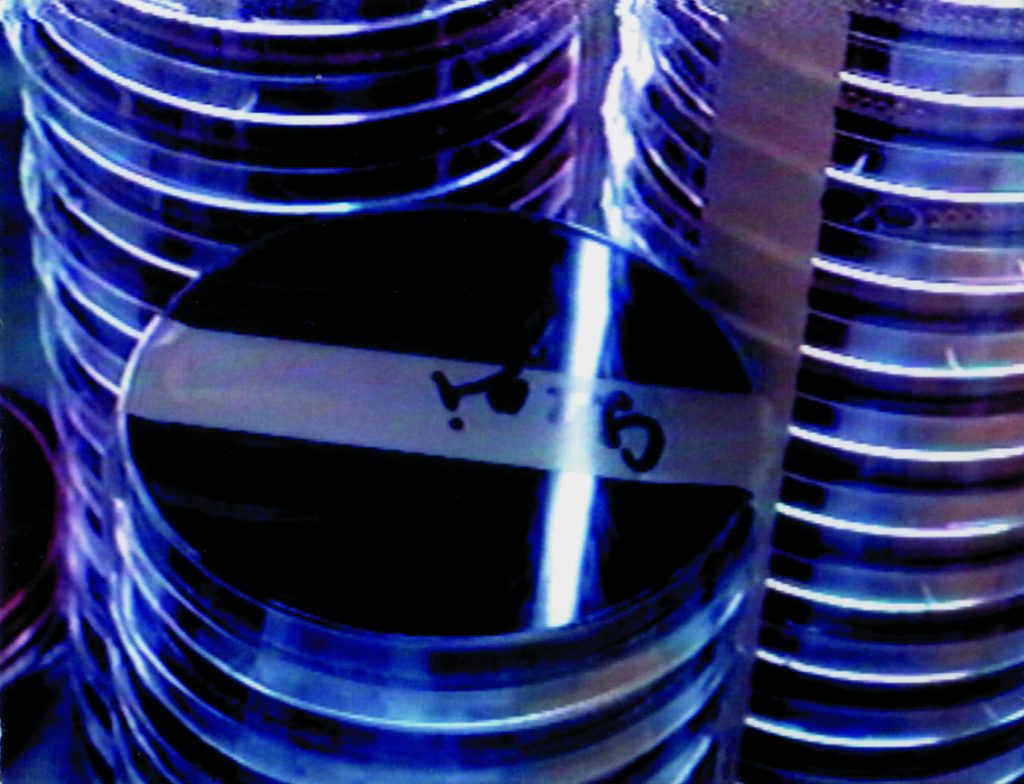
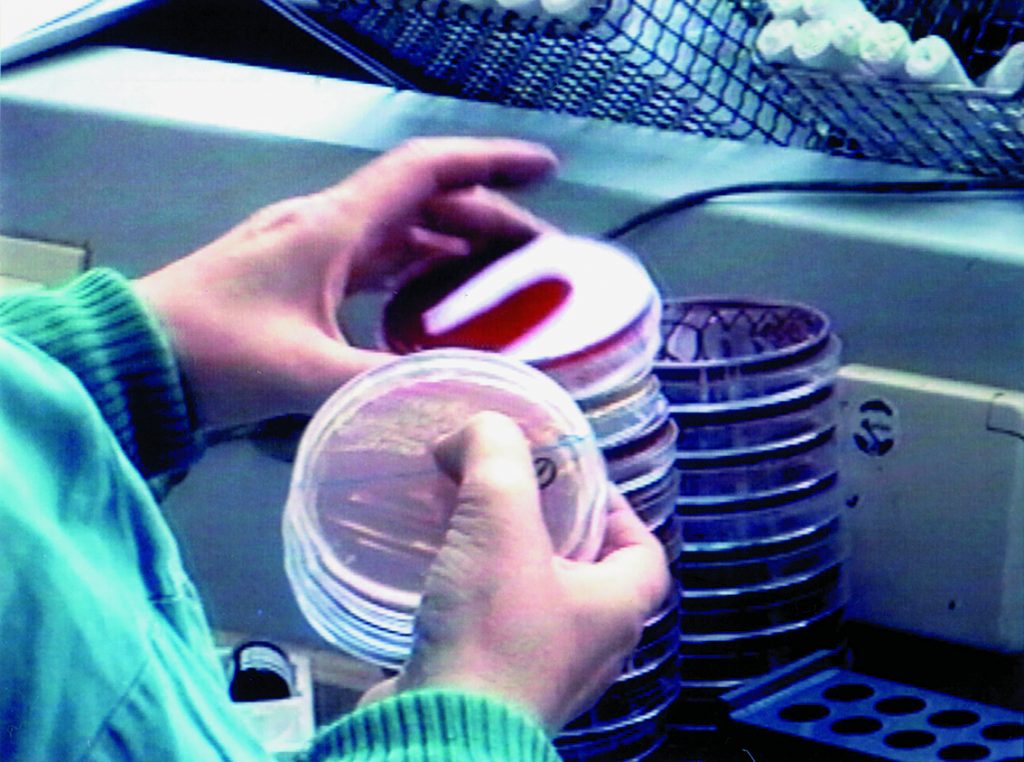
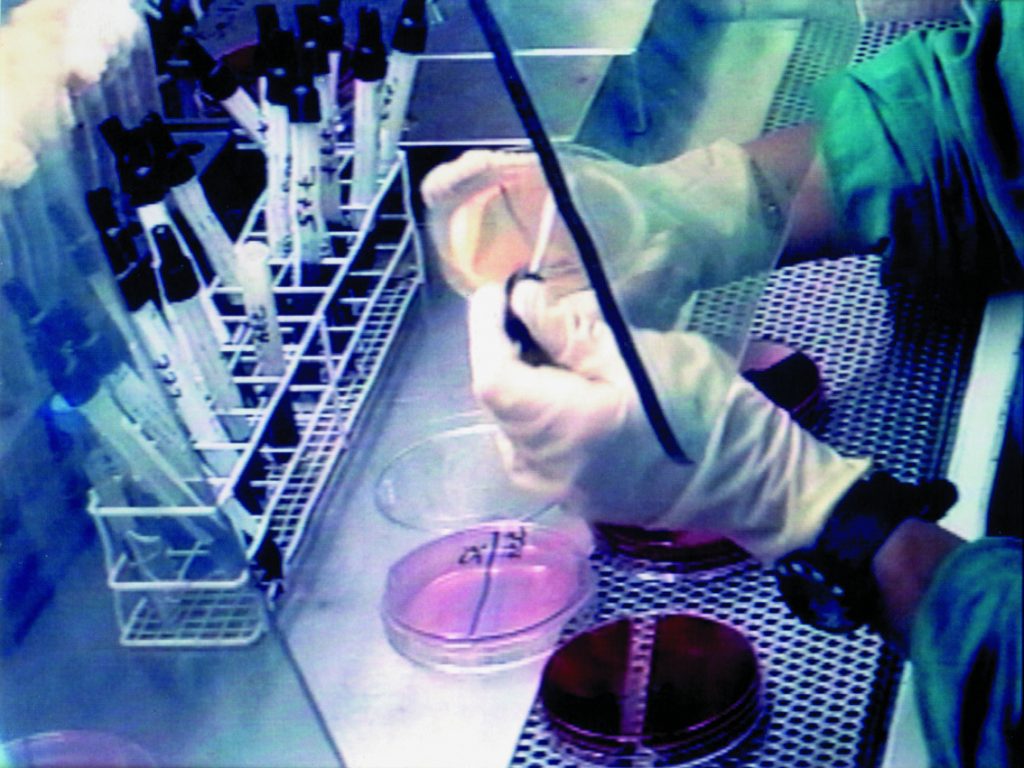
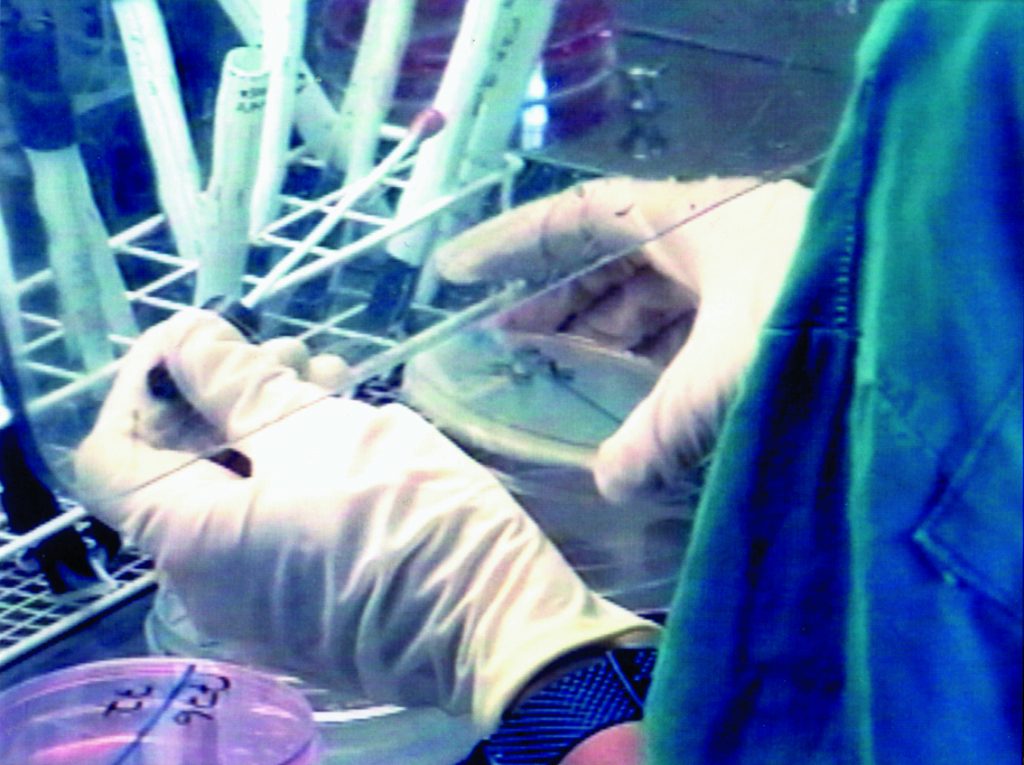
mind stick 4.0 : cibachrome on transpartent plexiglass, 1 x 2 m, 2013, detail 1
Hand-out erhitzt geschütelt gelöst, initially produced for exhibition at Künsterlaus Bethanien 1995
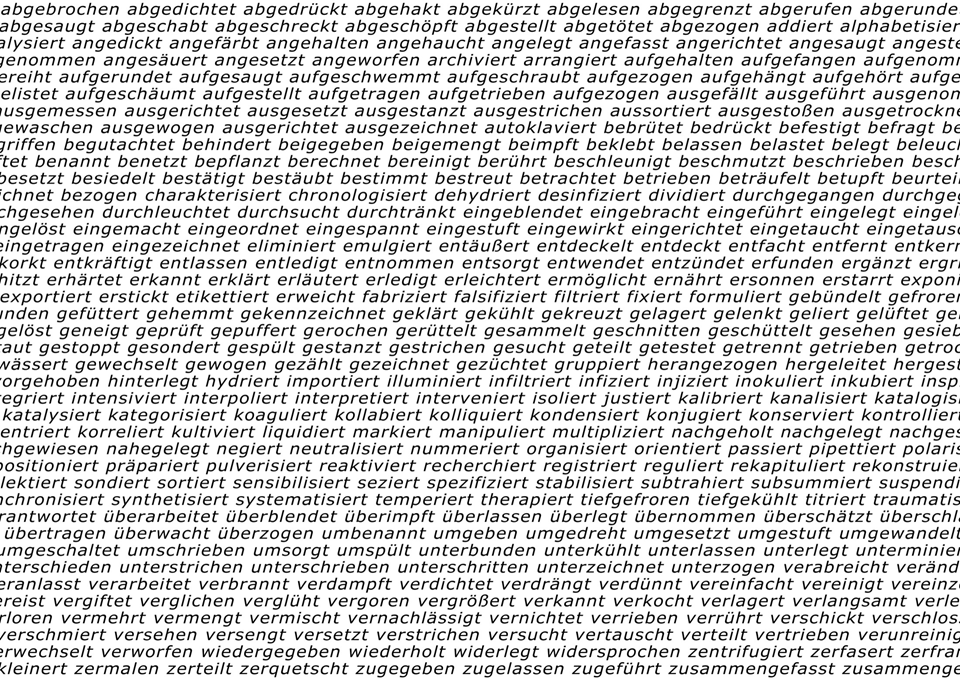
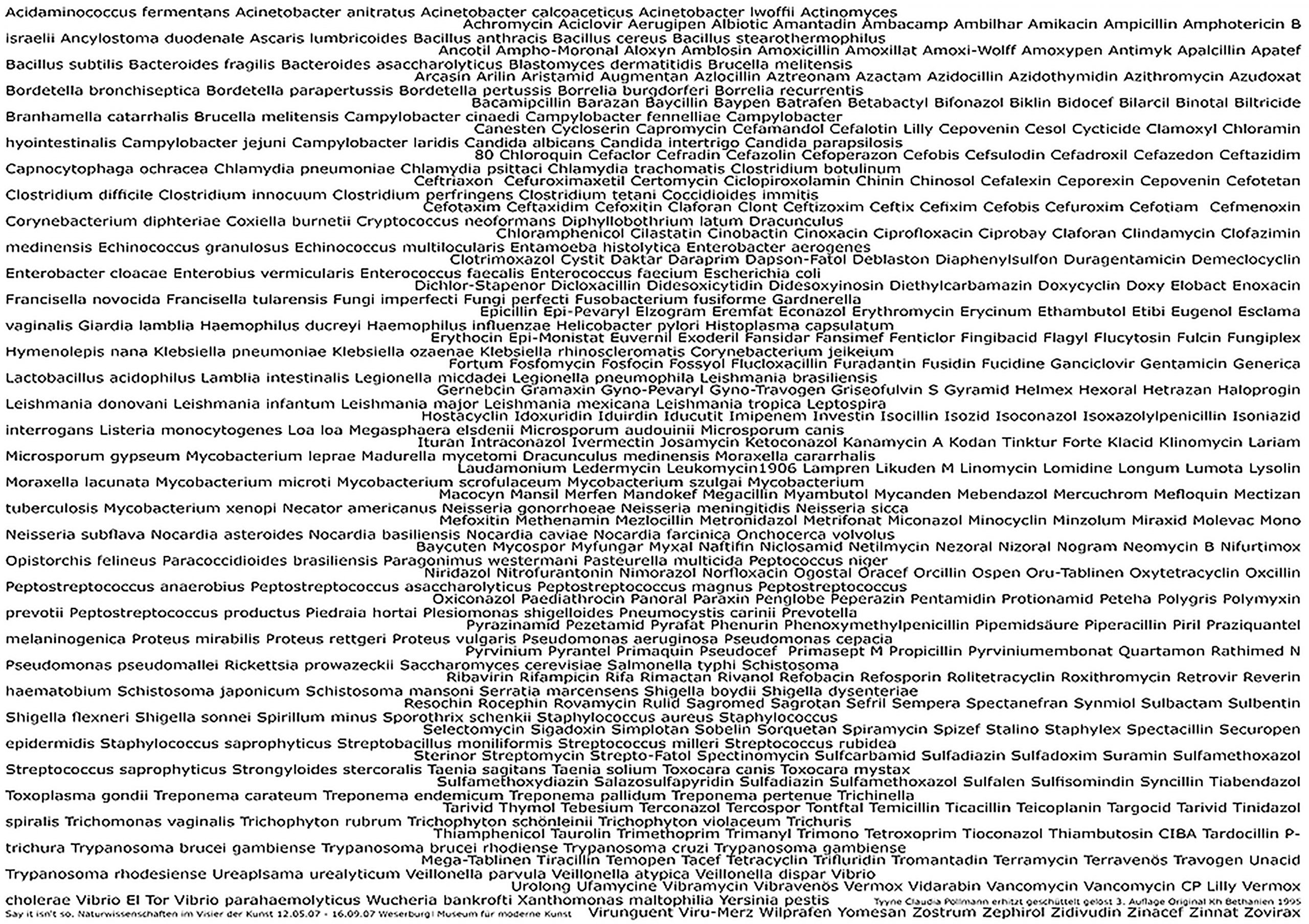
Rainer Borgemeister, based on conversations with Tyyne Claudia Pollmann, 1995:
Operators are subject to a function of accuracy and routine.
The treatment is not an arrow that knows only one direction: the execution of an action affects the operator and the treated equally, though, perhaps, in different ways.
Doesn’t every touch entail changes?
An information that is always accompanied by a sensation and a valuation.
This is a delivered, a surrendered body.
A list of verbs that denote active interventions and activities directed to changes: after they are accomplished. They are in the form of their past participle. In school, we used to say ‘middle word’. This designation concerns their partitive property: in fact, they divide according to two directions: one affects the agent (doer), the other affects the affected (treated).
The agent and the affected are both treated externally, but in a way that participates. It cannot be otherwise than that we are involved in what we do or in what happens to us.
Objection: But don’t we have to separate the technical from the living? Objection: But why do we insist so much on separation? – We have long followed a path of separations in order to make other connections. Conversely, why not make connections to -perhaps- make other separations?
The operation is always an interferential relation, no matter whether it is a mental or a practical operation, a military one (strategy) or a surgical one (intervention).
Its goal is a creation, a work, its executing organ an operarius, its stooge.
The plan for the procedure is decided on the basis of the models. Strategy of thinking, strategy of practice. But these stratagems do not say anything about the relationship or touch: enemy or friend touch – to designate an old model. If a different model underlies a conception of contact, we may no longer speak of stratagems, and so on.
Contact, to which model of imagination does this expression correspond?
Two lists of names: one with those that designate microorganisms, the other with those substances that fight them.
Look at the names of the bacteria like portraits. A perhaps surprising aspect, which at least helps to treat them as equals, so to speak.
You are right, we have to revise our ideas of order.
Revised, reviewed: that would not be enough. It takes time for a different view to be reflected in practice. – Let’s not forget: every new model inevitably contains in itself a subset of the properties from which it departs. It cannot break away simply because the way it was conceived is based on old models.
In the naming a certain way of imagining can be expressed.
A fiction: what would happen if I had participated in this way. A fiction because a model has no prophetic guarantee.
In every action there is a decision, if you like, a danger. –
We say ‘risk’ today because most actions are business.
A barter of give and take (wars) calculated as far as possible in advance, at every level.